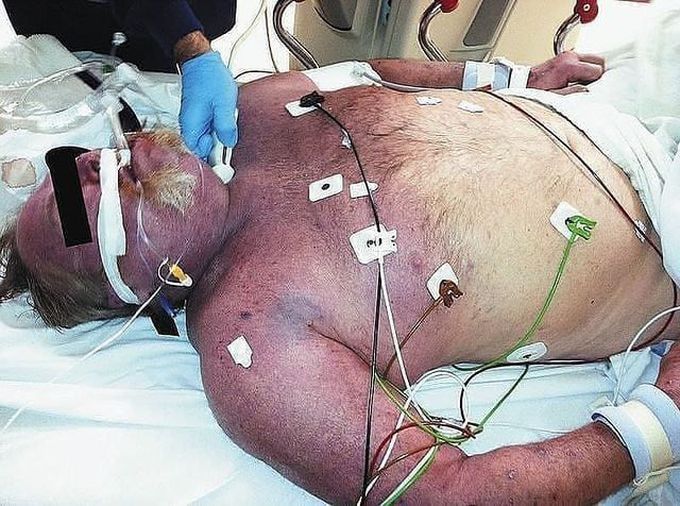


Superior Vena cava syndrome
A 59-year-old man with hypertension and Crohn's disease was found unconscious at home. He was being treated with infliximab administered through a central venous catheter, which had been placed for long-term intermittent treatment. The patient had been treated unsuccessfully with sulfasalazine, glucocorticoids, and immunomodulatory therapies, including methotrexate, azathioprine, and mercaptopurine. He was intubated and brought to the emergency department with stable vital signs. Physical examination was notable for cyanosis of the head, neck, upper torso, and arms. Venography showed occlusion of the superior vena cava, a finding consistent with the superior vena cava syndrome (SVCS). Ultrasound-accelerated thrombolysis was performed along with bare-metal stenting of the superior vena cava, which alleviated the obstruction. After 2 weeks of hospitalization, the patient recovered with only residual visual impairment in the right eye (20/200) as a result of prolonged congestion of the retinal veins. SVCS is often due to external compression from cancers (e.g., cancers of the lung and lymphomas) but may be caused by intravascular thrombosis associated with the placement of a central catheter. by: https://www.instagram.com/p/CYbVH0-AnkJ/?utm_medium=copy_link
Source: https://www.instagram.com/p/CYbVH0-AnkJ/?utm_medium=copy_linkLooking at the picture I would never have guessed that the patient survived. Thanks for sharing.
My first thought was "accident" and yet the info told me a different story. Interesting case! 🥼📑

